Busy women often struggle to find time to prioritize their fitness and exercise routines. With packed schedules and never-ending to-do lists, it can be difficult to carve out time for a trip to the gym or a fitness class. However, there is a solution for these time-strapped women - at-home ab exercises that can be done in the comfort of their own living rooms. These exercises are designed to target the abdominal muscles, helping busy women strengthen their core and achieve their fitness goals.
Imagine being able to tone and sculpt your abs without ever leaving your house. Fit Trainers have compiled a list of the best at-home ab exercises for busy women, ensuring that fitness can be seamlessly integrated into their already busy lives. These exercises are not only effective, but they also require minimal equipment, making them accessible to women of all fitness levels. Whether you have five minutes or thirty, these exercises can be tailored to fit your schedule, allowing you to work towards a stronger core at your own pace. So, put on your workout gear and get ready to feel the burn - these at-home ab exercises are about to take your fitness routine to the next level.
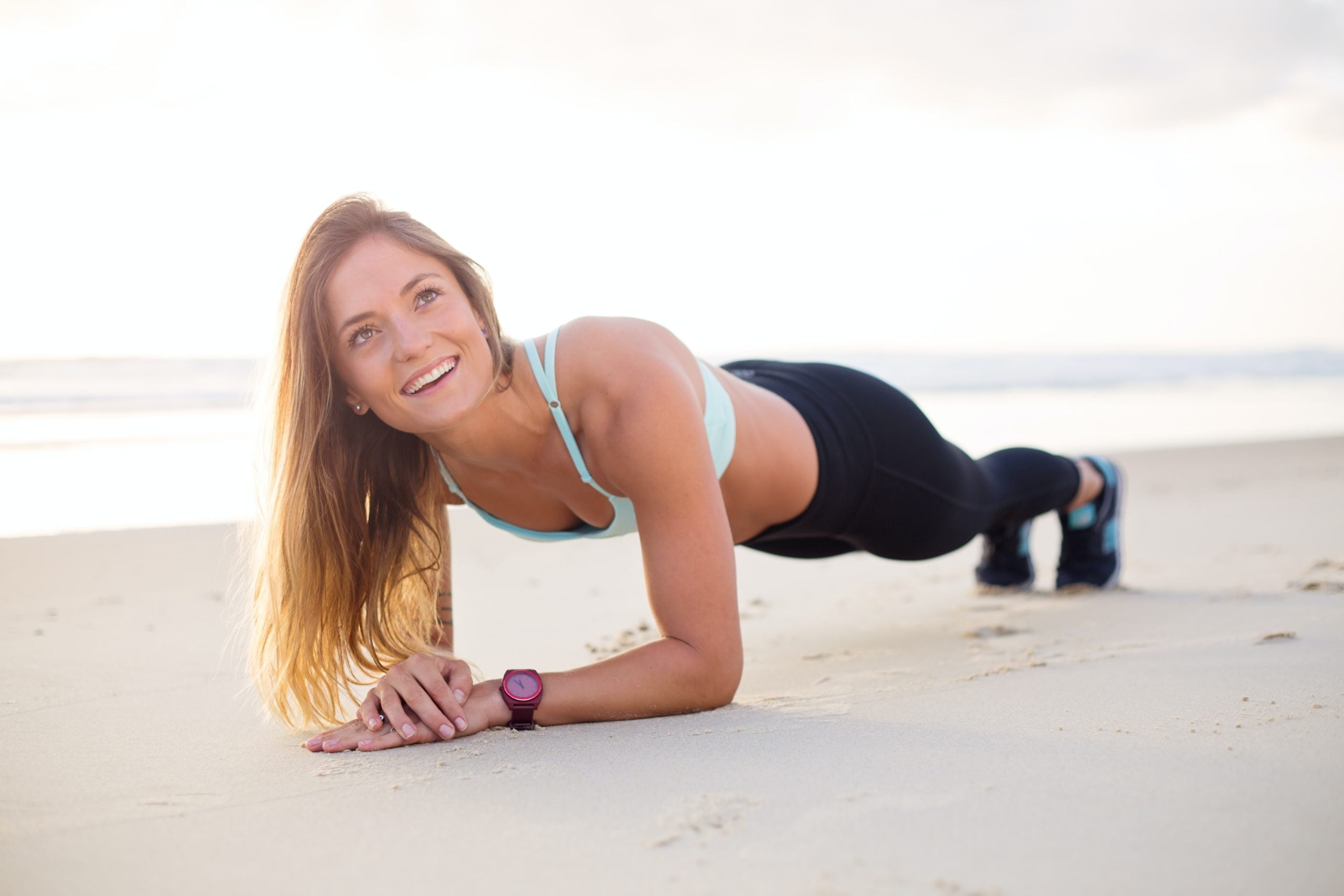
Plank
As we continue our journey to mastering the plank, let's dive into the proper form that will help you maximize your results. Proper Plank Form is essential to ensure that you engage the right muscles and avoid injury. Start by lying face down on the floor, then push up onto your toes and forearms, keeping your elbows directly under your shoulders. Engage your core by drawing your belly button in towards your spine, and squeeze your glutes to keep your body in a straight line from head to toe. Maintain a neutral neck and spine by looking down at the floor, and breathe deeply throughout the exercise.
Now that you have the foundational knowledge of proper form, let's explore some variations for every level. Whether you're a beginner or an advanced planker, there are options to challenge and strengthen your core. For beginners, try the knee plank by dropping your knees to the floor while maintaining the same forearm and toe position. This modification reduces the intensity, allowing you to build strength gradually. As you progress, take it up a notch with the high plank, which involves supporting your body on your hands instead of your forearms. This variation engages your shoulders and arms more, making it a great option for those looking to strengthen their upper body.
For the advanced plankers out there, let's turn up the heat with some intense variations. The side plank targets your obliques and promotes stability. Stack your feet on top of each other and lift your body onto one forearm, keeping your hips lifted and your core engaged. Another challenging option is the plank with leg lift. While in a high plank position, slowly lift one leg off the ground, focusing on keeping your body stable and maintaining proper form. These variations will push your limits and take your plank game to the next level.
In conclusion, mastering proper plank form is crucial to getting the most out of this exercise. Whether you're a beginner or an advanced planker, there are variations available for every level of fitness. By incorporating these variations into your routine, you can continuously challenge your core and achieve maximum results. So, keep pushing yourself and remember, a strong core is the foundation of a strong body.

Sit-Ups
After a challenging plank session that left your core feeling stronger than ever, it's time to shift our focus to another classic exercise - sit-ups. Sit-ups are a fantastic way to target and tone your abdominal muscles, and there are various variations that can help you work different parts of your abs. Let's dive into some of these variations and explore how to make sit-ups even more intense for a truly challenging workout.
1. Variations of sit-ups for targeting different ab muscles
If you're looking to specifically target your upper abs, try crunches. Lie on your back with your knees bent and feet flat on the ground. Place your hands behind your head and slowly lift your shoulder blades off the ground, engaging your upper abs. For a lower ab focus, consider reverse crunches. Lie on your back with your legs extended towards the ceiling. Keep your hands by your sides or under your glutes for support. Lift your hips off the ground, bringing your knees towards your chest.
2. How to increase the intensity of sit-ups for a more challenging workout
To take your sit-ups to the next level, you can incorporate weighted sit-ups. Hold a dumbbell, medicine ball, or weight plate against your chest as you perform the sit-up. This added resistance will engage your muscles even more. Another way to increase intensity is to try bicycle sit-ups. Lie on your back with your legs extended. As you perform the sit-up, bring your left elbow towards your right knee, then switch sides, creating a cycling motion.
3. Common mistakes to avoid when doing sit-ups
While sit-ups can be highly effective, it's crucial to perform them with proper form to prevent injury and maximize results. Avoid pulling on your neck or using your hands to lift your head off the ground, as this can strain your neck and reduce the effectiveness of the exercise. Instead, focus on engaging your core and using your abdominal muscles to lift your upper body. Additionally, don't rush through the movement. Take your time to control the motion and ensure a full range of motion.
4. Modifications for beginners or those with lower back pain
For beginners or individuals with lower back pain, it's essential to start with modified versions of sit-ups. One modification is bent knee sit-ups. Perform the sit-up with your knees bent and feet flat on the ground, which reduces strain on the lower back. Another modification is crunches on an exercise ball. Sit on an exercise ball with your feet firmly planted on the ground. Slowly roll back until your lower back is supported by the ball, then perform the crunches.
5. Tips for staying motivated and consistent with sit-up workouts
To stay motivated and consistent with your sit-up workouts, set specific goals and track your progress. Whether it's increasing the number of sit-ups you can do or aiming for a certain level of core strength, having measurable objectives will keep you motivated. Additionally, mix up your sit-up routine by incorporating different variations and challenging yourself with increased intensity. Remember to listen to your body and rest when needed to avoid overtraining. With dedication and perseverance, you'll achieve a strong and toned core through regular sit-up workouts.

Bicycle Crunch
As you catch your breath after the intense session of sit-ups, let's move on to the next exercise that will truly challenge your core strength and endurance - the Bicycle Crunch. Get ready to feel the burn and push yourself to new limits.
Proper Bicycle Crunch Form:
To start, lie down on your back and place your hands lightly behind your ears, keeping your elbows wide. Lift your legs off the ground, bending your knees at a 90-degree angle. Now, engage your core and lift your upper body off the ground, bringing your right elbow towards your left knee as you extend your right leg straight out. As you switch sides, bring your left elbow towards your right knee while extending your left leg. Remember to keep your movements controlled and avoid any jerking motions.
Maintain a steady pace, making sure to fully extend your legs without locking your knees. Imagine yourself cycling through the air, feeling the resistance in your core with each twist and crunch. Keep your shoulder blades off the ground and focus on contracting your abdominal muscles with each repetition. Picture your core getting stronger and more defined with every rep, as you power through the burn and challenge yourself to go further.
Variations for Different Fitness Levels:
If you're just starting out or have any lower back issues, you can modify the bicycle crunch by keeping your feet on the ground and performing the twisting motion with your upper body. This reduces the strain on your lower back while still targeting your obliques and rectus abdominis.
For those looking to take the bicycle crunch up a notch, you can add a medicine ball or a weight plate to intensify the exercise. Hold the weight with both hands, extending your arms straight up towards the ceiling as you perform the bicycle crunch. This added resistance will engage your core even more, pushing your muscles to work harder and grow stronger.
Remember, proper form is crucial to get the most out of any exercise. So, focus on maintaining a controlled movement, feeling the burn in your core, and envisioning the transformation taking place in your body. Embrace the challenge and trust the process, and soon enough, you'll be amazed at the results you achieve with the Bicycle Crunch.
Variations for Different Fitness Levels
Now that you have learned about the proper form for bicycle crunches, it's time to explore the various variations that can be incorporated into your fitness routine. These variations are designed to cater to different fitness levels, ensuring that everyone can benefit from this effective exercise. So, let's dive into the world of bicycle crunch variations!
For Beginners: If you're just starting your fitness journey or have limited core strength, modify the bicycle crunch by keeping your knees bent at a 90-degree angle and focusing on the twisting motion. This modification will reduce the strain on your lower back while still engaging your abdominal muscles. As you gain strength and confidence, gradually extend your legs to a straight position, making the exercise more challenging.
For Intermediate Level: Once you've mastered the basic bicycle crunch, it's time to take it up a notch. Try incorporating weighted bicycles by holding a dumbbell or a medicine ball in your hands. As you perform the exercise, the added weight will increase the resistance, making your core muscles work even harder. This variation is excellent for building strength and toning your abs.
For Advanced Level: If you're looking for an intense challenge, elevate your legs during the bicycle crunch. By resting your legs on an elevated surface such as a stability ball or a bench, you'll engage your core muscles more intensely, forcing them to work harder to maintain stability. This advanced variation not only targets your abs but also activates your hip flexors and stabilizing muscles, taking your fitness to new heights.
Remember, regardless of your fitness level, it's crucial to listen to your body and progress gradually. Start with the modifications that suit your capabilities, and as you gain strength and confidence, challenge yourself with more advanced variations. By incorporating these variations into your routine, you'll continue to challenge your core muscles and make progress towards your fitness goals. Keep pushing yourself, and soon you'll be amazed at the strength and definition you've achieved through bicycle crunches!
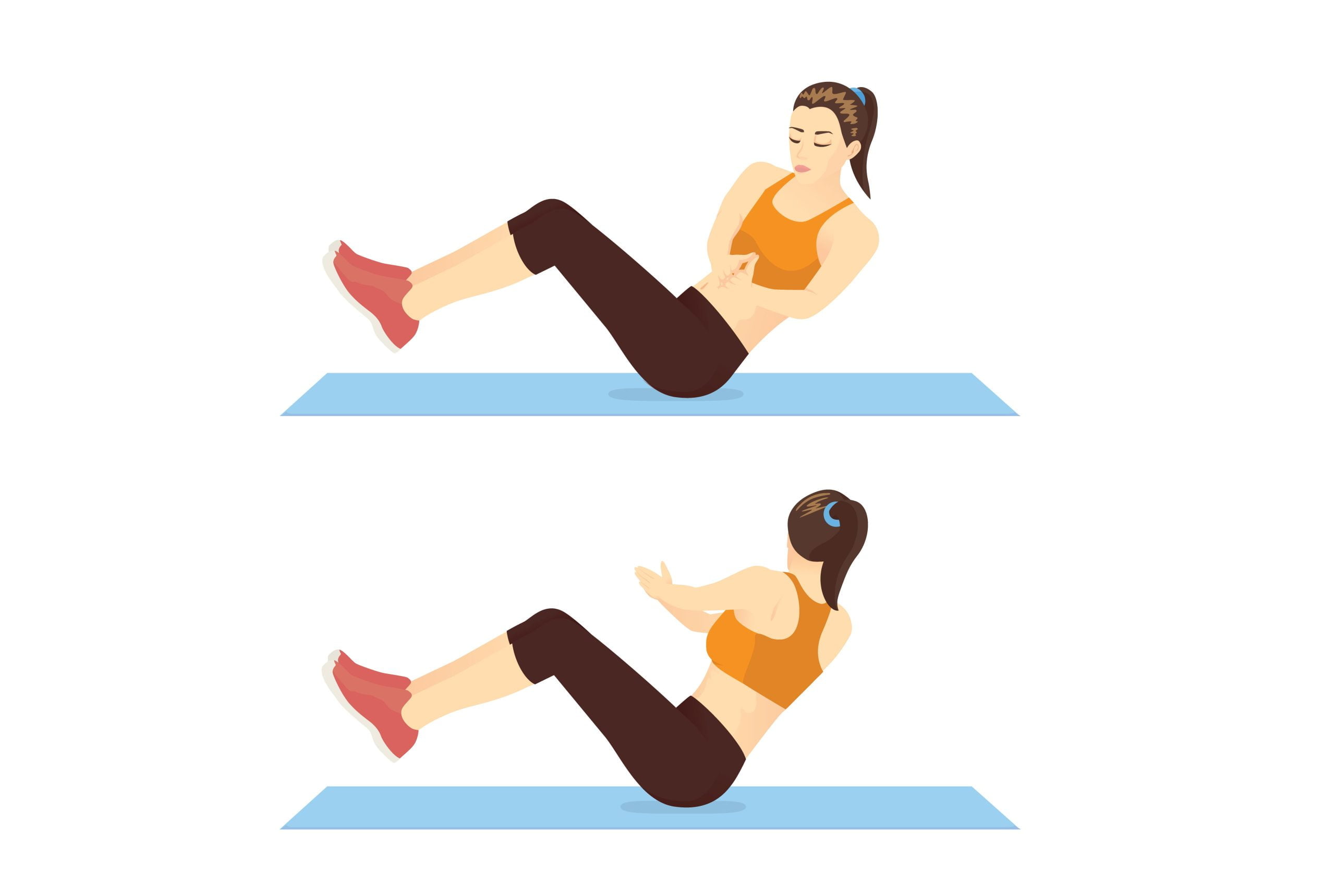
Russian Twist
As you catch your breath after a challenging set of bicycle crunches, it's time to shift your focus to another core-strengthening exercise: the Russian Twist. This exercise targets not only your abs but also your obliques, helping to create a well-defined waistline and a strong midsection. Just like with any exercise, it's crucial to perform the Russian Twist with proper form to maximize its benefits and prevent any potential injuries.
Proper Russian Twist Form:
1. Sit on the floor with your knees bent and your feet flat on the ground. Keep your back straight and engage your core muscles to maintain stability throughout the exercise.
2. Lean back slightly, creating a V shape with your torso and thighs. This position will engage your abdominal muscles and activate your obliques.
3. Hold your hands together in front of your chest, with your elbows bent. This will provide additional resistance and help you maintain balance during the exercise.
4. With control, rotate your torso to one side, aiming to touch the ground beside you. Keep your hips facing forward and your feet grounded throughout the movement.
5. Return to the starting position and then rotate to the opposite side. Remember to move slowly and maintain control throughout the exercise.
6. Continue alternating sides for the desired number of repetitions or time duration.
By following these steps, you can ensure that you are performing the Russian Twist exercise with proper form, maximizing its effectiveness and reducing the risk of injury. Remember to always listen to your body and start with lighter weights or modifications if needed, gradually increasing the intensity as your strength improves. Stay tuned for the next section, where we will explore different variations of the Russian Twist exercise for different fitness levels. Keep up the hard work and let's continue sculpting those strong and defined abs!
Variations for Different Fitness Levels
Now that you have mastered the bicycle crunch, it's time to take your abdominal workout to the next level with the Russian Twist. This exercise is not only effective in building core strength and stability, but it also targets the obliques, or side abdominal muscles, giving you a well-rounded midsection. But don't worry, I've got you covered with variations and modifications of the Russian Twist exercise for different fitness levels.
Beginner Level: If you're new to the Russian Twist, start by sitting on the floor with your knees bent and your feet flat on the ground. Place your hands together in front of your chest, and engage your core as you lean back slightly, creating a V-shape with your torso and thighs. From here, slowly rotate your torso to the right, bringing your hands to the outside of your right hip. Return to the center, and then rotate to the left side. This movement should be controlled and deliberate, focusing on engaging your obliques.
Intermediate Level: Once you feel comfortable with the basic form, you can increase the intensity by adding a weight. Hold a dumbbell or a medicine ball in your hands, keeping your arms extended in front of you. As you rotate your torso from side to side, the added resistance will challenge your core muscles even more. Remember to maintain a strong and stable posture throughout the exercise, keeping your spine neutral and your shoulders relaxed.
Advanced Level: For those looking for an extra challenge, you can try performing the Russian Twist on an unstable surface, such as a Bosu ball or a stability disc. This will require even more core stability and control, as your body works to maintain balance. You can also incorporate a leg raise into the movement, lifting your feet off the ground as you rotate your torso. This will engage not only your core muscles but also your hip flexors and lower abs.
Remember, regardless of your fitness level, it's important to listen to your body and progress at a pace that feels comfortable and safe for you. As always, consult with a fitness professional before attempting any new exercises, especially if you have any pre-existing injuries or medical conditions. With these variations and modifications, you can continue to challenge and strengthen your core with the Russian Twist. Keep up the hard work and enjoy the results!
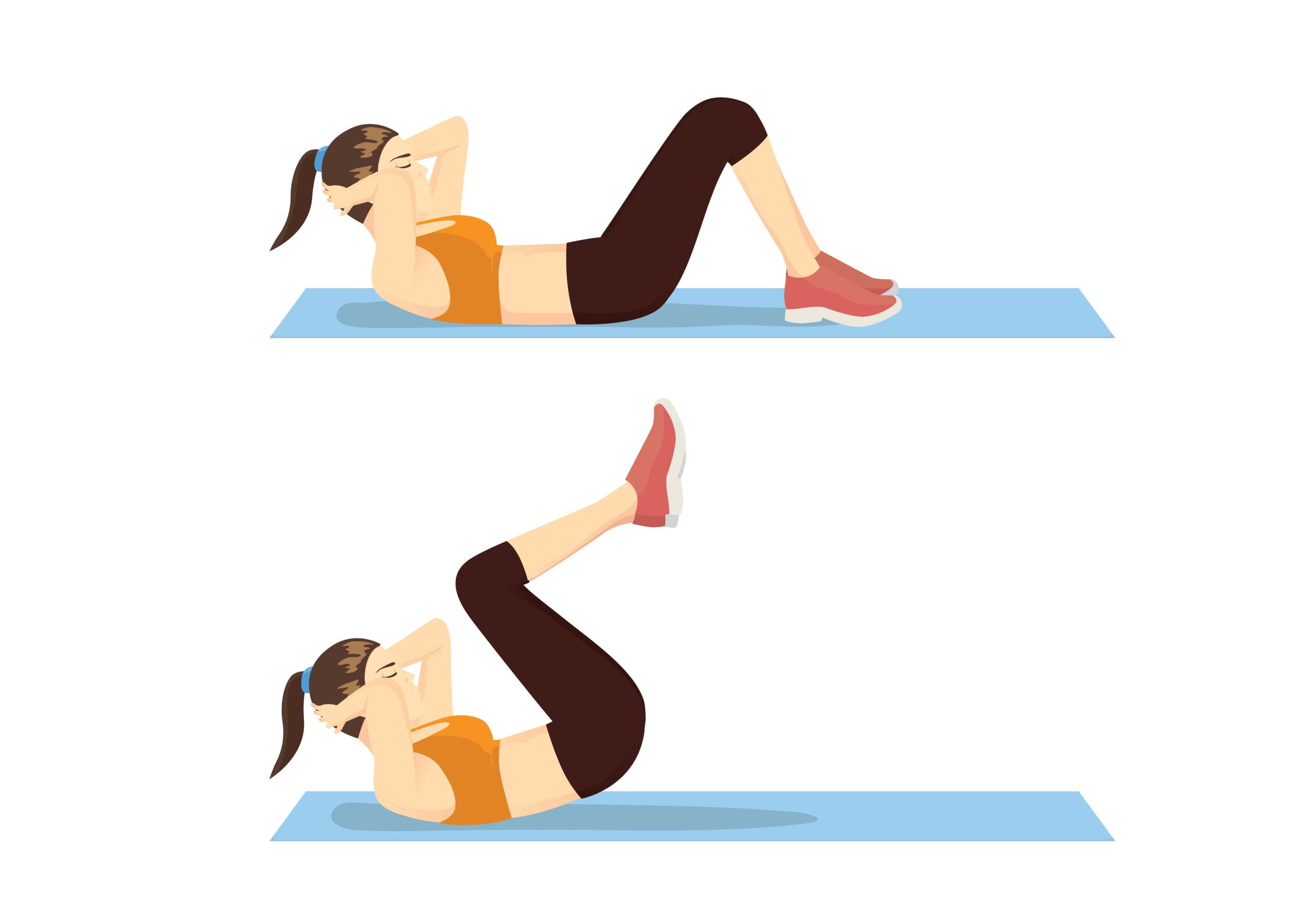
Reverse Crunch
After feeling the burn from those intense Russian Twists, it's time to move on to the next exercise that will truly challenge and sculpt your abs: the Reverse Crunch. This exercise targets the lower abs, helping you achieve that strong and defined core you've always wanted. So, let's dive into the benefits of including reverse crunches in your ab workout routine.
One of the key benefits of incorporating reverse crunches into your ab workout routine is the strengthening of your lower abdominal muscles. Unlike traditional crunches that primarily focus on the upper abs, reverse crunches specifically target the lower abs, which are often harder to engage. By performing this exercise correctly, you will not only develop a flatter stomach but also improve your overall posture and stability.
Another advantage of adding reverse crunches to your routine is the improvement in your hip flexor strength. As you lift your legs off the ground and bring your knees towards your chest, you engage your hip flexor muscles. Strengthening these muscles is crucial for various daily activities such as walking, running, and even sitting. By including reverse crunches in your ab workout, you'll be enhancing your hip flexibility and reducing the risk of injuries.
Lastly, reverse crunches can help in alleviating lower back pain. As you perform this exercise, your lower back is supported and stabilized, reducing the strain on the lumbar region. The controlled movement of lifting your legs off the ground and curling your pelvis helps strengthen the muscles surrounding your lower back, providing support and reducing discomfort. Incorporating reverse crunches into your ab workout routine can contribute to a stronger and pain-free lower back.
By reaping these benefits, you'll not only achieve a sculpted core but also improve your overall physical well-being. Remember to maintain proper form and execute the exercise with control and precision. So, let's get those lower abs burning and take your ab workout to the next level with reverse crunches!
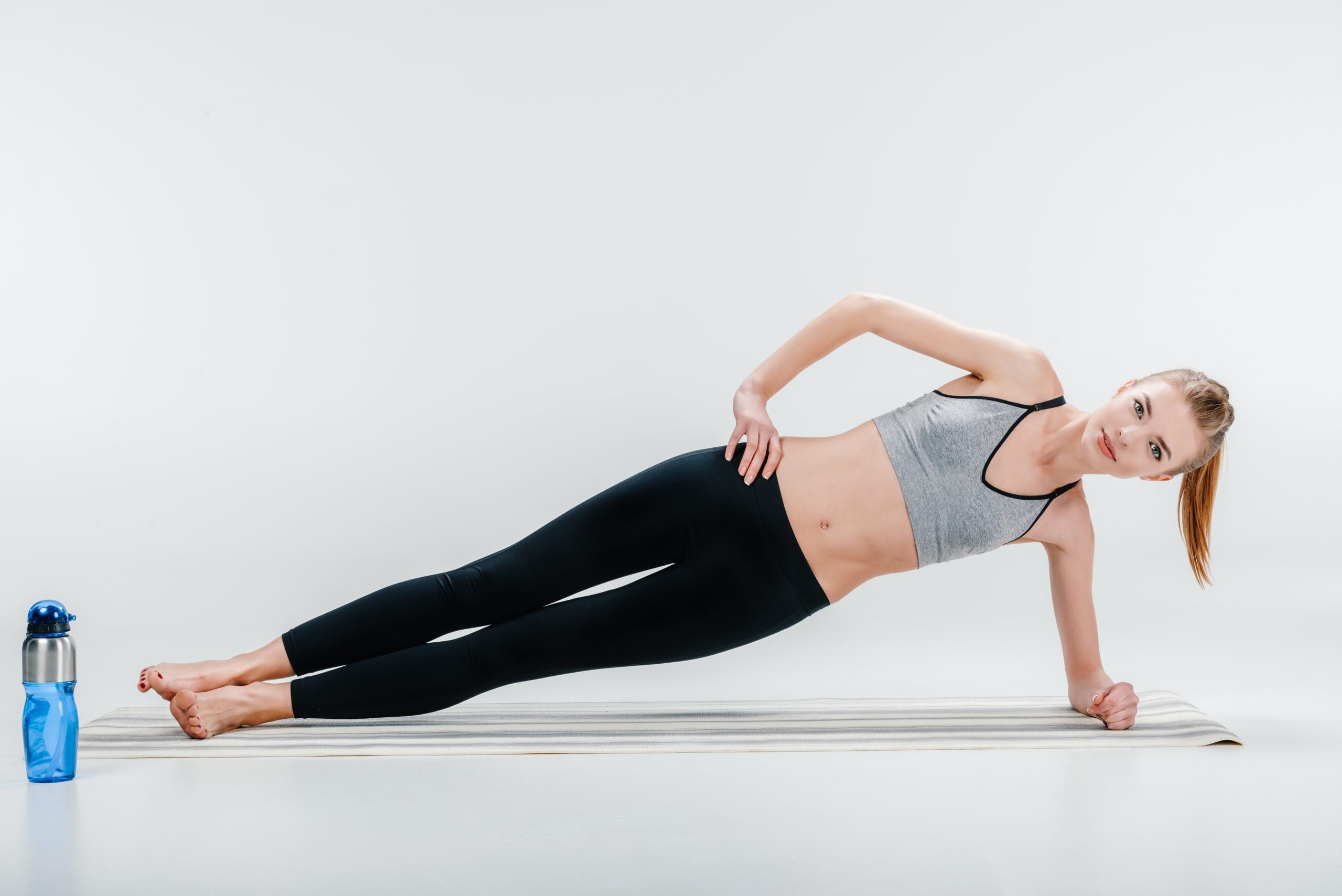
Side Plank
Now that you've mastered the Reverse Crunch, it's time to take your core workout to the next level with the Side Plank. This challenging exercise targets not only your abs, but also your obliques, shoulders, and hips. It's a great way to strengthen your entire core while improving stability and balance. But before you jump into the Side Plank, it's important to understand proper form and technique.
Proper Side Plank Form: Begin by lying on your side, propping yourself up on your forearm with your elbow directly beneath your shoulder. Stack your feet on top of each other, engaging your core muscles to lift your hips off the ground. Your body should form a straight line from your head to your heels. Keep your neck in line with your spine and your shoulder blades pulled back and down. Hold this position for as long as you can, aiming for at least 30 seconds on each side.
Variations for Different Fitness Levels: Once you have mastered the basic Side Plank, there are several variations you can incorporate into your routine to challenge yourself even further. If you're a beginner, you can start by modifying the exercise by bending your bottom knee and resting it on the ground for added stability. As you become more advanced, you can progress to lifting your top leg in the air, adding an extra challenge to your obliques and hip muscles.
Side Plank Variations: To really amp up the intensity of your Side Plank, try these advanced variations. The Side Plank with Rotation involves lifting your top arm and rotating your torso towards the ceiling, engaging your obliques even more. The Side Plank with Hip Dip requires you to lower your hips towards the ground and then lift them back up, targeting your obliques and hip muscles from a different angle. And for those looking for an extra challenge, the Side Plank with Leg Lift involves lifting your top leg while maintaining proper form, forcing your core muscles to work even harder to stabilize your body.
Incorporating these Side Plank variations into your workout routine will not only keep your core engaged and strong, but also add variety and excitement to your fitness journey. Remember, it's important to listen to your body and start with the appropriate level of difficulty for your fitness level. With consistency and determination, you'll be able to conquer the Side Plank and take your core strength to new heights. Keep up the great work, and soon you'll be on your way to a rock-solid core!
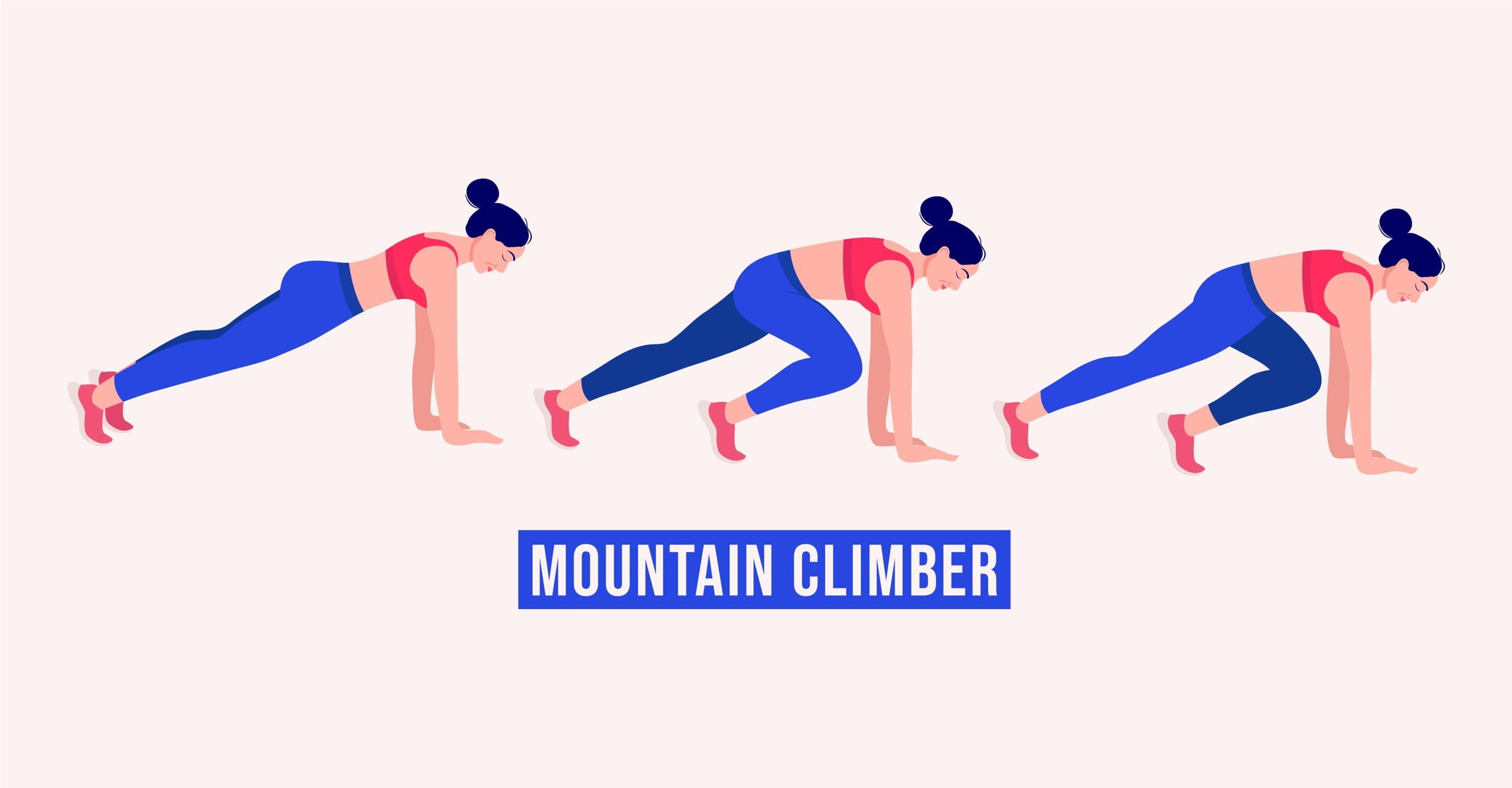
Mountain Climbers
Now that you've mastered the proper form and learned some variations for different fitness levels, it's time to take your mountain climbers to the next level and use them as a powerful cardio exercise. Mountain climbers are an excellent choice for cardiovascular conditioning because they engage multiple muscle groups and elevate your heart rate, making them a perfect addition to any cardio routine.
To perform mountain climbers for cardio, start in a high plank position with your hands directly under your shoulders and your body in a straight line from head to heels. From here, begin to alternate driving your knees towards your chest, as if you were running in place. Focus on maintaining a quick and steady pace, keeping your core engaged and your hips stable throughout the movement. As you become more comfortable, you can increase the speed and intensity of your mountain climbers to really get your heart pumping.
Mountain climbers for cardio can be incorporated into a variety of workout routines. You can start with a quick warm-up set of 30 seconds, followed by short bursts of intense mountain climbers for 20-30 seconds, and then recover for 10-15 seconds before repeating. Aim to complete 3-5 sets, depending on your fitness level and available time. Alternatively, you can include mountain climbers as a part of a circuit training routine, combining them with other cardiovascular exercises such as burpees, jumping jacks, or high knees. This will create a challenging and effective full-body workout that will help you burn calories, improve your endurance, and boost your cardiovascular fitness.
Incorporating mountain climbers into your cardio routine will not only provide a challenging workout, but it will also help you improve your overall fitness level. So, lace up your shoes, get ready to sweat, and let mountain climbers take your cardio training to new heights!
Conclusion
In conclusion, these at-home ab exercises are perfect for busy women who are looking to strengthen their core and achieve a toned midsection. The plank is a powerful exercise that engages multiple muscle groups, working your abs, back, and shoulders. As you hold the position, envision a strong and stable tree trunk, rooted deeply in the earth.
Next up are sit-ups, which target your upper and lower abs, as well as your hip flexors. Picture yourself effortlessly rising up, as if you were a graceful ballerina performing a perfect pirouette. The bicycle crunch is another fantastic exercise that mimics the motion of riding a bike, engaging your abs and obliques. Visualize yourself pedaling away, feeling the wind in your hair and the burn in your muscles.
The Russian twist is a challenging exercise that targets your obliques. Imagine yourself sitting tall on a Russian matryoshka doll, twisting from side to side with perfect balance and control. And don't forget about the reverse crunch, which targets your lower abs. Picture yourself lifting your hips off the ground, feeling the burn as you sculpt and define your abdominal muscles.
The side plank is an excellent exercise for strengthening your obliques and improving your balance. Imagine yourself as a sturdy and unshakeable statue, gracefully holding the side plank position with ease. Lastly, we have mountain climbers, a dynamic exercise that works your abs, shoulders, and legs. Picture yourself conquering a steep mountain, powering through each step with determination and strength.
Incorporating these at-home ab exercises into your busy schedule is an investment in your overall health and well-being. With consistency and dedication, you will be well on your way to a strong and sculpted core. Remember, the key is to listen to your body and start with exercises that feel comfortable and achievable. So grab your yoga mat, put on some motivational music, and get ready to unleash your inner fitness warrior. You've got this! 💪
